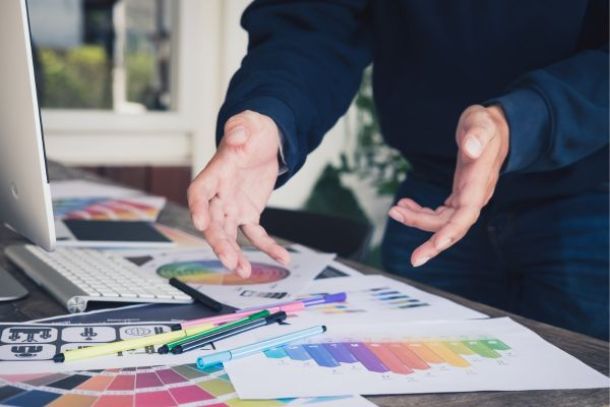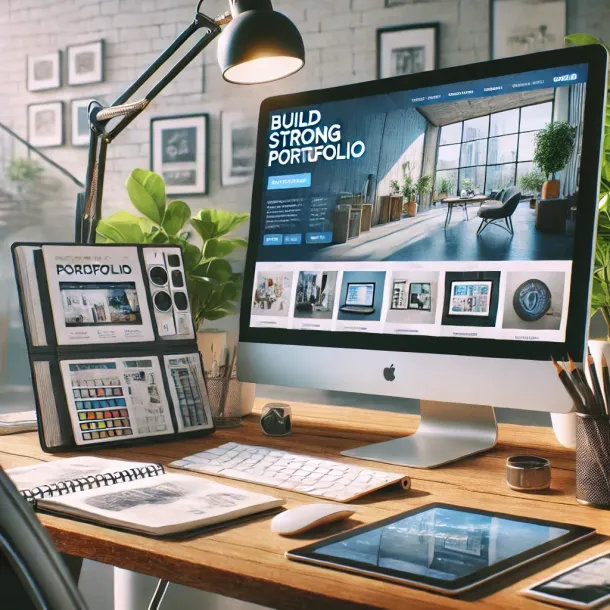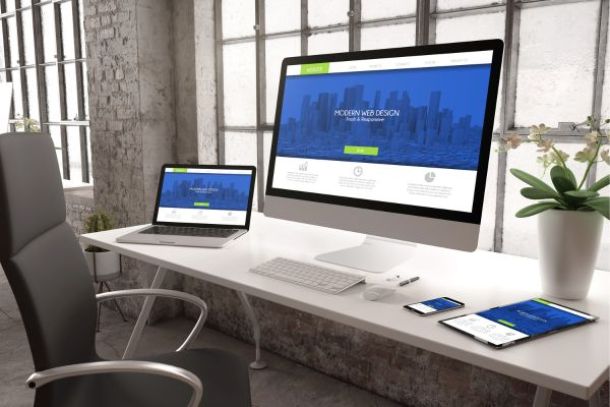The Role of Animation in Modern Web Design
The Role of Animation in Modern Web Design
In the dynamic and fast-evolving world of web design, animation has emerged as a powerful tool that can elevate user experience, communicate ideas, and bring a website to life. Far from being mere decorative elements, animations serve various functional roles that contribute to a website’s usability, engagement, and overall aesthetic appeal. As web technologies continue to advance, the use of animation in modern web design has become more sophisticated, offering designers new ways to enhance their digital creations. This article explores the role of animation in modern web design, discussing its benefits, various applications, best practices, and the future of animated web experiences.
1. Enhancing User Experience with Animation
User experience (UX) is at the core of successful web design, and animation plays a crucial role in creating a seamless, intuitive, and enjoyable experience for users. When used effectively, animation can guide users through a website, provide feedback, and make interactions more engaging and satisfying.
Guiding User Flow
One of the primary functions of animation in web design is to guide users through a website’s content and features. Animations can subtly direct the user’s attention to important elements, such as calls to action (CTAs), navigation menus, or new content. For example, a gentle fade-in effect on a CTA button can draw the user’s eye, encouraging them to take the desired action.
In addition, animations can help create a logical flow of information, making it easier for users to navigate a website. Transition animations, such as sliding or fading between sections, can provide visual continuity and prevent abrupt changes that might confuse or disorient users.
Providing Feedback
Feedback animations are essential for creating a responsive and interactive user experience. These animations communicate to users that their actions have been recognized and are being processed. For instance, a button that changes color or expands slightly when clicked provides immediate feedback, reassuring the user that their input has been received.
Loading animations are another common form of feedback. When users submit a form or wait for content to load, a spinning icon or progress bar can indicate that the system is working, reducing uncertainty and frustration.
Adding Delight and Engagement
Beyond functionality, animations can add an element of delight and surprise to a website, making the user experience more enjoyable. Microinteractions—small, subtle animations triggered by user actions—are a great way to inject personality and fun into a design. For example, a heart icon that “pops” when clicked to like a post, or an animated mascot that appears with helpful tips, can create a memorable and engaging experience for users.
2. Communicating Information Through Animation
Animation is not just about aesthetics—it’s also a powerful tool for communicating complex information quickly and effectively. In an age where attention spans are short, and users demand information at a glance, animation can help convey ideas in a clear and visually appealing way.
Explaining Concepts with Animated Illustrations
Animated illustrations are an effective way to explain complex concepts, processes, or products. For example, a software company might use an animated explainer video on their website to demonstrate how their product works. By breaking down information into visual steps, animations make it easier for users to understand and retain information.
Infographics are another area where animation can enhance communication. An animated infographic can highlight key data points, show changes over time, or reveal patterns and relationships that might be missed in a static image. These dynamic visuals can be more engaging and informative than traditional charts or diagrams.
Storytelling and Branding
Animation is a powerful storytelling tool that can bring a brand’s narrative to life. Through the use of animated characters, scenes, and sequences, brands can create immersive experiences that resonate with users on an emotional level. For example, an animated brand mascot that interacts with website visitors can reinforce brand identity and create a memorable connection.
Moreover, animation can be used to tell the story of a brand’s values, mission, or journey. Animated timelines, for example, can visually depict a company’s history, milestones, and growth, providing users with a richer understanding of the brand’s heritage and vision.
Highlighting Key Features
When it comes to product pages or service offerings, animations can effectively highlight key features and benefits. For instance, a hover animation on a product image can reveal additional details, such as color options, features, or pricing. This interactive element not only makes the content more engaging but also helps users make informed decisions without leaving the page.
3. Best Practices for Using Animation in Web Design
While animation can greatly enhance a website, it’s important to use it thoughtfully and strategically. Poorly executed animations can overwhelm users, slow down a website, or detract from the overall user experience. Here are some best practices to keep in mind when incorporating animation into web design.
Keep It Purposeful
Every animation should have a clear purpose and contribute to the user experience. Avoid adding animations simply for the sake of decoration. Instead, use them to enhance navigation, provide feedback, communicate information, or add personality to your site. Purposeful animations are subtle, intuitive, and align with the overall goals of the website.
Consider Performance and Load Times
Animations can be resource-intensive, especially if they involve complex graphics or high frame rates. To ensure that your animations don’t negatively impact your website’s performance, optimize them for speed and efficiency. This might involve using lightweight animation libraries, compressing files, or employing CSS animations instead of JavaScript when possible.
Lazy loading is another technique that can help improve performance. By loading animations only when they are needed—such as when a user scrolls to a particular section—you can reduce the initial load time of your website.
Ensure Accessibility
Accessibility should be a priority in all aspects of web design, including animation. Not all users experience websites in the same way, so it’s important to ensure that your animations are accessible to everyone. This might involve providing alternatives for users with disabilities, such as offering text descriptions for animated content or allowing users to disable animations if they cause discomfort or distraction.
Moreover, consider the speed and intensity of animations. Fast or flashing animations can be problematic for users with certain conditions, such as epilepsy or motion sensitivity. Provide controls that allow users to adjust or turn off animations as needed.
Test Across Devices and Browsers
Web animations can behave differently across various devices and browsers, so it’s essential to test your animations thoroughly. Ensure that they function correctly on mobile devices, tablets, and desktops, and that they are compatible with popular web browsers. Responsive design is crucial, as animations that work well on a desktop may need to be adjusted for smaller screens or touch interfaces.
4. The Future of Animation in Web Design
As web technologies continue to evolve, the possibilities for animation in web design are expanding. From the rise of 3D graphics and virtual reality to the increasing use of AI-driven animations, the future of web design is likely to be more immersive, interactive, and visually rich.
3D Animation and Interactivity
3D animation is becoming more prevalent in web design, offering new ways to create depth, realism, and interactivity. With advancements in WebGL and other 3D technologies, designers can now integrate 3D models, animations, and scenes directly into websites. This can be particularly effective for product showcases, virtual tours, or interactive storytelling.
For example, an e-commerce site might use 3D animation to allow users to explore a product from all angles, zoom in on details, or see how it works in real-time. This level of interactivity can significantly enhance the user experience and provide a more engaging way to interact with content.
AI-Driven Animations
Artificial intelligence (AI) is starting to play a role in web design, including in the creation and management of animations. AI can be used to automate certain aspects of animation, such as generating smooth transitions, predicting user interactions, or personalizing animations based on user behavior.
For instance, AI-driven animations can adapt to individual users by learning their preferences and habits. If a user frequently interacts with a particular type of content, the website could dynamically adjust animations to highlight similar content, creating a more personalized and responsive experience.
Virtual and Augmented Reality
Virtual reality (VR) and augmented reality (AR) are pushing the boundaries of what’s possible with web animation. These technologies allow designers to create fully immersive environments that users can explore and interact with in real-time. While still in the early stages of web integration, VR and AR hold enormous potential for creating unique and engaging web experiences.
For example, a travel website could use VR to provide virtual tours of destinations, or an interior design site could use AR to let users see how furniture would look in their own homes. As these technologies become more accessible, they are likely to become an integral part of modern web design.
Conclusion
Animation has become an essential tool in modern web design, offering a wide range of benefits that go beyond mere aesthetics. From enhancing user experience and guiding user flow to communicating complex information and adding a touch of delight, animation has the power to transform a static website into a dynamic and engaging experience.
However, with great power comes great responsibility. Designers must use animation thoughtfully and purposefully, ensuring that it serves the needs of the user and enhances the overall experience. By following best practices, staying mindful of accessibility, and keeping an eye on emerging trends, designers can harness the full potential of animation to create websites that are not only visually stunning but also highly functional and user-friendly.
As technology continues to advance, the role of animation in web design is set to grow, offering exciting new possibilities for creating immersive, interactive, and personalized web experiences. Whether you’re a seasoned designer or just starting out, understanding the role of animation in web design is key to staying ahead in the ever-evolving digital landscape.


